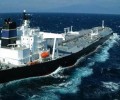Early this month, pirates released the hijacked MT Sunrise 689, a small product tanker bound for Vietnam which went missing soon after it left Singapore. During the captivity that lasted nearly six days, the pirates siphoned 2,000 of the total 5,200 metric tons of oil valued at $4 million. They also stole the personal belongings of the crew and threatened to kill if they did not follow orders – but assured them that their only aim was to steal the oil carried onboard the vessel.
This is the 12th incident of piracy in Southeast Asia involving small oil tankers. These vessels are easy targets because they are small, have smaller crews, move at slow speeds, and the low freeboard makes boarding comparatively easier and quicker. Perhaps the most worrying aspect of these attacks is that pirates in Southeast Asia have taken a liking for small product tankers carrying diesel that is sold to prospective customers, who re-sell for anywhere between $400 and $650 per ton in the black market.
These pirates or robbers are popularly referred to as ‘Petro Pirates’ and are believed to be part of transnational organised crime groups who own small tankers and are networked with the oil smuggling mafia. Furthermore, these Petro Pirates appear to only steal cargo and not harm the crew. For instance, in June 2014, pirates hijacked Orapin 4, a Thai oil tanker, with its cargo of oil worth nearly $2.2 million; they stole the oil, did not hurt the crew, but robbed them of watches, cell phones, money and other valuables. Similarly, in April 2014, pirates raided a tanker off the coast of Malaysia and stole 3 million liters of diesel. In fact the business model of Petro Pirates’ does not appear to include ransoms.
Interestingly, a similar story is being played out along the west coast of Africa but on a larger scale. Early this year, MT Kerala, a 75,000 ton tanker carrying diesel was hijacked by Nigerian pirates off the Angolan coast. The vessel was released after being siphoned of 12,270 tons of its diesel cargo. The pirates took the usual precautions of disabling the Automatic Identification System, switching off communications, and repainting the name of the vessel.
The International Maritime Bureau’s half year report for January to June 2014 recorded 23 incidents off the west coast of Africa, and Nigerian waters has witnessed 10 such attacks. These trends are a continuation of the past reports and the UK Chamber of Shipping records state that acts of piracy and armed robbery in the Gulf of Guinea are worrisome – 62 attacks in 2012; 51 in 2013. The Gulf of Guinea accounted for 19 per cent of all maritime attacks worldwide. Significantly, the Gulf of Guinea is believed to be a greater threat to shipping than Somalia because of its flourishing oil and gas industry which attracts shipping, unlike Somalia, where pirates preyed on targets of opportunity along the busy sea route.
The West African piracy is driven by a commodity – oil – which is available in abundance. For instance, Nigeria is an oil-rich country and produces nearly 2 million barrels of oil per day. However, it has limited refining capacity resulting in both export of crude and import of refined oil thus generating sufficient maritime traffic for pirates to feed on.
Unlike Nigeria, Singapore does not produce any oil but is the hub of the Asian petrochemicals industry with a sophisticated refining, storage, and distribution infrastructure, and therefore attracts significant tanker traffic. A variety of large and small vessels carrying oil and gas make port calls to deliver crude or carry refined products to regional and global markets. According to the US Energy Information Agency, the petrochemical industry is the backbone of Singapore’s economy and it has a refining capacity of nearly 1.4 million barrels of oil per day.
The aforementioned incidents along the west coast of Africa and in Southeast Asian waters offer an interesting feature. The business model of piracy in both cases involves hijacking vessels for the cargo carried onboard, and in particular, the refined energy products such as diesel. It is plausible that pirates in Southeast Asia may have borrowed the idea from West Africa – who appear to have become more sophisticated and have graduated to hijacking bigger ships.
In essence, the pirates may not have changed their Modus Operandi of attacking both small and big ships; instead they have become cargo/commodity conscious and believe that stealing refined energy products is more lucrative than waiting for ransoms. However, it is useful to mention that the stolen oil or other products are carried in smaller vessels that are equally vulnerable to interception by security forces.
Source: Eurasia Review
Copyright Ships & Ports Ltd. Permission to use quotations from this article is granted subject to appropriate credit given to www.shipsandports.com.ng as the source.

